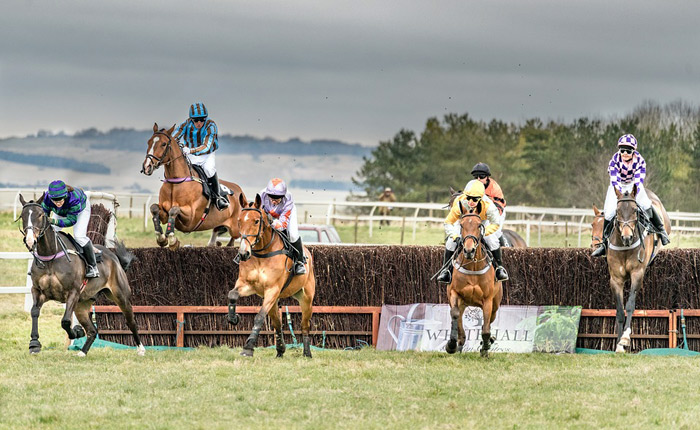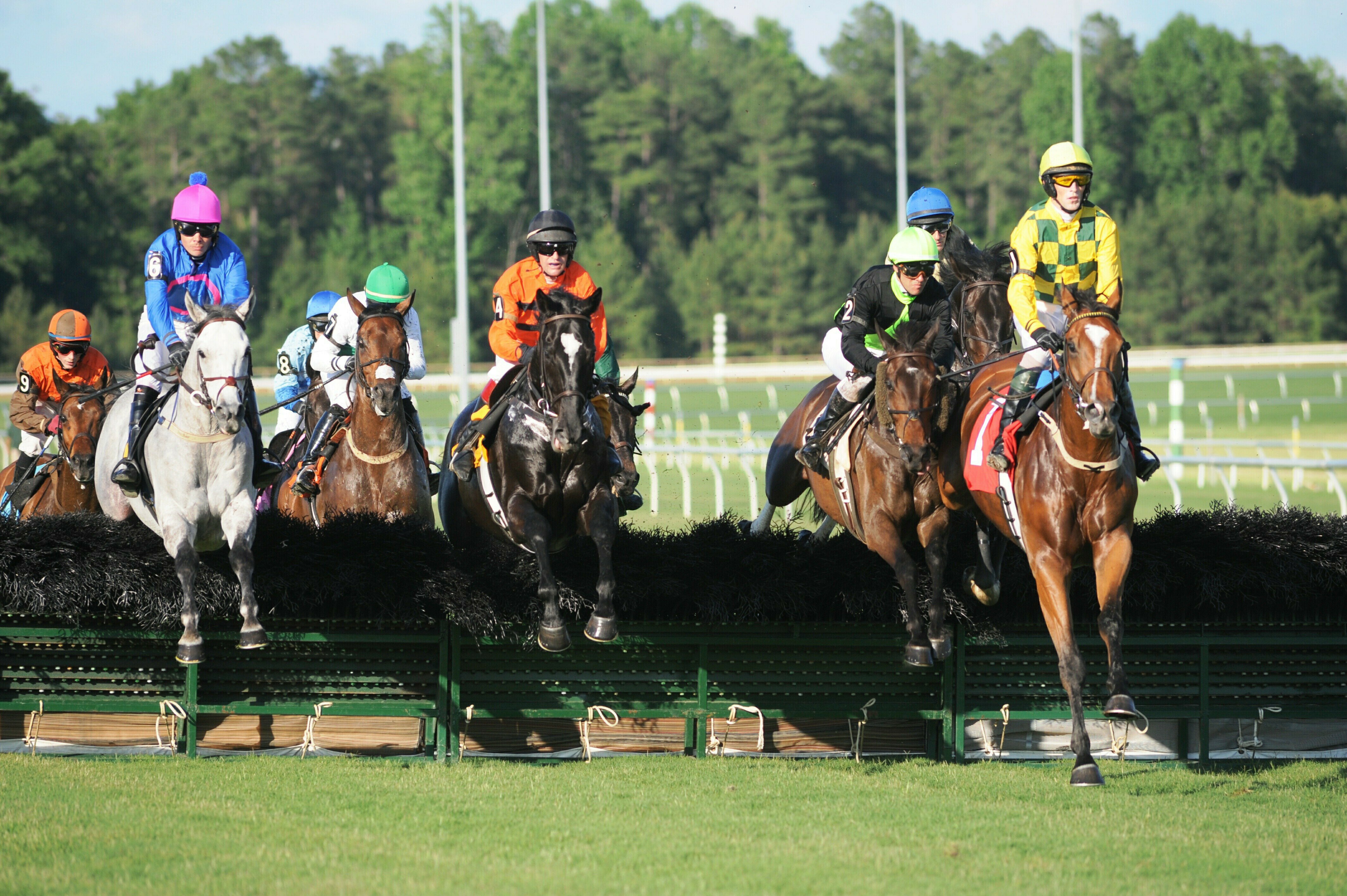Steeplechase History and Evolution

The steeplechase, a thrilling equestrian sport, has a rich history spanning centuries. Its origins lie in the tradition of fox hunting, where riders would race across the countryside, leaping over obstacles like fences and ditches. Over time, this pursuit evolved into a formalized sport, attracting enthusiasts and developing a unique set of rules and regulations.
The Origins of Steeplechase Racing
The term “steeplechase” originated in the 18th century, referring to races where riders would navigate a course marked by a prominent landmark, often a church steeple. These early races were informal and often involved amateur riders, who would compete for bragging rights and a bit of fun. The first documented steeplechase race took place in Ireland in 1752, between two gentlemen who bet on who could reach a church steeple first. This event sparked a trend, with similar races popping up throughout the British Isles.
Evolution of Steeplechase Rules and Regulations
As steeplechase racing gained popularity, it became necessary to establish standardized rules and regulations. The first official steeplechase rules were introduced in England in the early 19th century. These rules specified the course layout, the types of obstacles, and the requirements for riders and horses. The development of steeplechase rules was influenced by factors such as safety concerns, the need for fair competition, and the desire to attract spectators.
Significant Moments in Steeplechase History
The evolution of steeplechase racing can be traced through a series of significant moments:
- 1839: The first Grand National Steeplechase takes place in England, marking a pivotal moment in the sport’s history. This race, known for its challenging course and its long tradition, continues to be one of the most prestigious steeplechase events in the world.
- 1866: The National Steeplechase Association is formed in the United States, establishing a governing body for the sport in America. This organization played a crucial role in promoting and standardizing steeplechase racing in the United States.
- 1900: Steeplechase racing is included in the Olympic Games for the first time, further elevating its status as a major international sport. However, steeplechase racing was dropped from the Olympics after the 1920 games, due to the changing landscape of Olympic events.
- 1950s-1960s: The development of new materials and technologies, such as synthetic fences and lighter, more maneuverable horses, contributed to a significant increase in the speed and excitement of steeplechase racing. This period also saw the emergence of legendary riders like Red Rum, who dominated the Grand National and became a symbol of steeplechase racing.
- Present Day: Steeplechase racing continues to evolve, with innovations in horse training, course design, and safety protocols. The sport remains a thrilling spectacle, drawing large crowds and captivating fans with its combination of athleticism, strategy, and daring.
Famous Steeplechase Races and Riders
Steeplechase history is filled with legendary races and riders who have left an enduring mark on the sport.
- The Grand National: This iconic race, held annually in England, is known for its challenging course, which includes a variety of obstacles, including fences, ditches, and a water jump. The Grand National is one of the most popular sporting events in the world, attracting millions of spectators and generating significant media attention.
- Red Rum: This legendary racehorse dominated the Grand National in the 1970s, winning the race three times. Red Rum’s incredible athleticism, his ability to overcome adversity, and his enduring popularity have made him a symbol of steeplechase racing.
- Frankel: This thoroughbred racehorse, known for his speed and stamina, dominated the flat racing scene in the early 2010s. However, Frankel’s exceptional athleticism and his ability to jump obstacles have led to speculation that he could have been a successful steeplechase racer.
The Mechanics of Steeplechase Racing

Steeplechase racing, with its thrilling blend of speed, agility, and strategy, stands apart from other equestrian disciplines. This unique form of horse racing involves navigating a course dotted with obstacles, demanding both exceptional horsemanship and a deep understanding of the intricacies of the race.
The Role of Obstacles in Steeplechase Racing
Obstacles are the defining feature of steeplechase racing, adding an element of danger and unpredictability. These obstacles, typically wooden fences, water jumps, and banks, test the horse’s jumping ability and the rider’s skill in guiding them over these challenges. The strategic placement of obstacles significantly influences the race’s flow and the tactics employed by riders.
Obstacles serve several purposes in steeplechase racing:
- Challenge and Excitement: Obstacles create a dynamic and visually captivating experience for spectators. The thrill of watching horses soar over fences and navigate water jumps adds a unique dimension to the sport.
- Strategic Decision-Making: Riders must carefully assess the placement and difficulty of obstacles, adjusting their strategy based on the horse’s strengths and weaknesses. Some horses excel at jumping fences, while others may be better suited for navigating water jumps.
- Pace and Positioning: Obstacles can significantly impact the pace of the race. A horse that excels at jumping may be able to maintain a faster pace throughout the course, while others may lose ground when encountering obstacles. The positioning of obstacles can also influence the flow of the race, forcing riders to make strategic decisions about their position.
- Horse and Rider Teamwork: The successful negotiation of obstacles requires a high level of trust and communication between horse and rider. The rider’s ability to guide the horse over the obstacles safely and efficiently is crucial for winning the race.
Horsemanship and Training for Steeplechase Horses and Riders
Steeplechase racing demands a unique combination of horsemanship and training for both horse and rider. The horse must possess exceptional athleticism, jumping ability, and the temperament to handle the challenges of the course. The rider, in turn, needs a deep understanding of the horse’s capabilities, as well as the skills to guide them over obstacles safely and efficiently.
Training the Horse
Steeplechase horses undergo rigorous training programs designed to develop their jumping ability, stamina, and overall athleticism. This training often includes:
- Jumping Practice: Horses are trained to jump over various obstacles, including fences, water jumps, and banks. This practice helps them develop the strength, coordination, and technique needed to clear obstacles safely and efficiently.
- Endurance Training: Steeplechase races can be long and demanding, requiring horses to maintain a high level of fitness. Endurance training includes long gallops, hill work, and other exercises that build stamina and cardiovascular strength.
- Obstacle Course Training: Horses are trained on courses that simulate the challenges they will face in a steeplechase race. This helps them become familiar with the types of obstacles they will encounter and develop the skills needed to navigate them successfully.
Training the Rider
Steeplechase riders must possess a high level of skill and experience. They undergo extensive training to develop the following skills:
- Riding Technique: Riders must be able to control the horse with precision, guiding them over obstacles safely and efficiently. This requires a strong seat, good balance, and the ability to use the reins and legs effectively.
- Obstacle Recognition and Strategy: Riders need to be able to quickly assess the difficulty of obstacles and develop a strategy for navigating them. This involves understanding the horse’s capabilities and choosing the best approach for each obstacle.
- Communication and Teamwork: Steeplechase riding is a team effort. Riders must be able to communicate effectively with their horses, using cues and signals to guide them over obstacles and maintain their position in the race.
Key Elements of a Successful Steeplechase Race Strategy
A successful steeplechase race strategy involves a combination of factors, including:
- Pace Management: Riders must strike a balance between maintaining a competitive pace and conserving their horse’s energy for the challenges ahead. A well-timed pace strategy can be crucial for winning the race.
- Obstacle Negotiation: Riders need to be able to assess obstacles quickly and choose the best approach for their horse. This involves understanding the horse’s strengths and weaknesses and using their skills to guide them over obstacles safely and efficiently.
- Position and Tactics: Riders must be aware of their position in the race and the tactics of their competitors. This involves making strategic decisions about when to move up, when to hold back, and when to make a move for the lead.
- Horse and Rider Fitness: Both horse and rider need to be in peak physical condition to handle the demands of a steeplechase race. This involves a rigorous training program and a healthy diet.
Steeplechase, that race where you gotta jump over those weird, pointy things. It’s like running an obstacle course, but with more mud and way less glory. But then you have someone like Lamecha Girma , who makes it look like a walk in the park.
He’s like the Usain Bolt of steeplechase, just way less flashy, but with more jumps. Yeah, steeplechase is definitely a sport for the truly dedicated.
Steeplechase, the race with those pesky hurdles and a water jump, is a test of pure athleticism. You gotta be quick, you gotta be strong, and you gotta be a little bit crazy. But you know who’s not crazy?
Wayde van Niekerk , that dude’s a beast! He might be known for the 400m, but he could probably conquer a steeplechase if he wanted to. Anyway, back to the steeplechase, it’s a real spectator sport, full of drama and excitement, just like a good episode of “The Office” but with less awkwardness and more sweat.